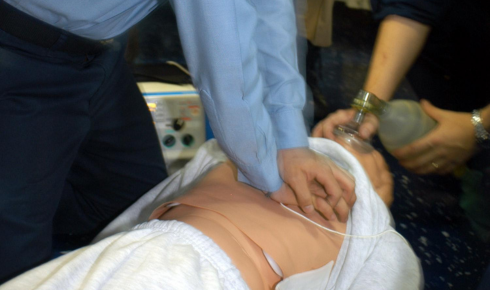Sudden cardiac arrest doesn’t discriminate by geography, but statistics reveal significant variations in occurrence rates across different US states. Understanding these geographic patterns and their underlying causes provides valuable insights into prevention strategies and highlights the importance of community preparedness for cardiac emergencies.
The Geographic Reality of Cardiac Arrest
When examining sudden cardiac arrest statistics across the United States, several states consistently appear at the top of concerning rankings. Oklahoma, Mississippi, Alabama, and West Virginia frequently show among the highest rates of sudden cardiac arrest and related cardiovascular deaths. These states, primarily located in the South and parts of the Midwest, share several common characteristics that contribute to their elevated cardiac emergency rates.
However, it’s important to note that data collection methods and reporting requirements can vary between states, which may influence these statistics. Despite these limitations, clear patterns emerge that point to specific risk factors concentrated in certain geographic regions.
The Southern Pattern: Understanding Regional Risk Factors
The southeastern United States, often referred to as the “Stroke Belt” or “Heart Disease Belt,” shows consistently higher rates of cardiovascular events, including sudden cardiac arrest. This pattern isn’t coincidental—it reflects a complex interplay of lifestyle, economic, environmental, and healthcare access factors that create perfect storms for cardiac problems.
Oklahoma frequently appears at or near the top of sudden cardiac arrest statistics, with rates significantly above the national average. The state’s position reflects several contributing factors including high rates of obesity, diabetes, smoking, and limited access to preventive healthcare in rural areas.
Lifestyle and Cultural Factors
Diet plays a crucial role in the geographic distribution of cardiac events. States with higher cardiac arrest rates often have dietary patterns characterized by high sodium intake, processed foods, and traditional cooking methods that rely heavily on frying and high-fat ingredients. The prevalence of fast food restaurants and limited access to fresh produce in many areas compound these dietary challenges.
Physical inactivity levels also correlate strongly with cardiac arrest rates. States with limited recreational facilities, harsh weather conditions that discourage outdoor activity, or cultural norms that don’t prioritize regular exercise tend to show higher rates of cardiovascular problems.
Smoking rates remain significantly higher in many of the states with elevated cardiac arrest statistics. Tobacco use is a major risk factor for coronary artery disease, which is the leading cause of sudden cardiac arrest.
Economic and Healthcare Access Factors
Socioeconomic factors play a substantial role in cardiac arrest rates. States with lower median incomes, higher poverty rates, and limited healthcare infrastructure often show higher rates of sudden cardiac arrest. These economic challenges create barriers to preventive care, medication compliance, and lifestyle modifications that could reduce cardiac risk.
Rural areas, which are prevalent in many high-cardiac-arrest states, face particular challenges. Limited access to cardiologists, longer distances to hospitals, and reduced availability of advanced cardiac care can contribute to both higher occurrence rates and worse outcomes for cardiac events.
Insurance coverage and healthcare policies also impact these statistics. States that didn’t expand Medicaid under the Affordable Care Act often have higher rates of uninsured individuals, which can lead to delayed treatment of conditions that predispose to sudden cardiac arrest.
Environmental and Occupational Influences
Environmental factors contribute to regional variations in cardiac arrest rates. Air quality, temperature extremes, and occupational hazards can all influence cardiovascular health. States with significant industrial activity, mining operations, or agricultural work may have populations exposed to environmental stressors that increase cardiac risk.
Extreme weather conditions, particularly heat waves, can trigger cardiac events in vulnerable individuals. States with harsh summers and limited access to air conditioning may see seasonal spikes in cardiac emergencies.
The Role of Chronic Disease Management
States with higher cardiac arrest rates often struggle with managing chronic diseases that predispose to sudden cardiac arrest. Diabetes, hypertension, and obesity are more prevalent in these areas, and inadequate management of these conditions significantly increases cardiac risk.
The opioid epidemic has also contributed to sudden cardiac arrest rates in some states. Opioid overdoses can cause respiratory depression, leading to cardiac arrest, and the geographic distribution of opioid abuse correlates with some areas of high cardiac arrest rates.
Age Demographics and Population Characteristics
Some states have older populations, which naturally correlates with higher rates of cardiac events. However, trends show increasing cardiac arrest rates among younger populations in certain states, often related to lifestyle factors, substance abuse, and undiagnosed congenital conditions.
Emergency Response and Survival Rates
While some states may have higher occurrence rates of sudden cardiac arrest, survival rates can vary dramatically based on emergency response systems, bystander CPR rates, and hospital capabilities. States with robust emergency medical services, widespread CPR training, and top-notch cardiac care facilities may experience better survival outcomes despite higher incidence rates.
This is where community preparedness becomes crucial. Organizations like In-Pulse CPR provide essential on-site CPR training that can significantly improve survival rates in cardiac emergencies. Their programs are particularly valuable in areas with higher cardiac arrest rates, as they help create networks of trained responders who can provide immediate care before professional help arrives.
Prevention and Community Response Strategies
Addressing geographic disparities in sudden cardiac arrest requires comprehensive approaches that tackle underlying risk factors. This includes improving access to healthcare, promoting healthy lifestyle choices, enhancing emergency response capabilities, and increasing CPR training rates in communities.
Community-wide CPR training initiatives have shown remarkable success in improving survival rates. When higher percentages of community members are trained in CPR, the likelihood that someone nearby can provide immediate care during a cardiac emergency increases dramatically.
The Importance of Data and Awareness
Understanding which states have higher cardiac arrest rates helps direct resources and prevention efforts where they’re needed most. However, it’s crucial to remember that sudden cardiac arrest can happen anywhere, to anyone, at any time. This reality underscores the importance of widespread CPR training and emergency preparedness regardless of geographic location.
Conclusion
While certain states show consistently higher rates of sudden cardiac arrest due to complex combinations of lifestyle, economic, and healthcare factors, the solution isn’t just understanding the statistics—it’s taking action. Whether you live in a high-risk state or not, being prepared for cardiac emergencies through CPR training and community awareness can save lives. The geographic patterns in cardiac arrest rates serve as essential reminders that health is influenced by much more than individual choices, and addressing these disparities requires community-wide efforts and systemic changes.
Author: Donna Ryan is a writer residing in Tucson, AZ. You can contact her at donnar668@gmail.com.

